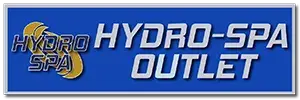Maintaining a hot tub in pristine condition enhances your relaxation experience and extends the lifespan of your investment. For beginners, understanding the basics of hot tub repair and maintenance can seem daunting; however, fundamental practices such as monitoring water chemistry and ensuring proper filtration are paramount. Whether it’s adjusting pH levels to maintain water clarity and hygiene, or inspecting the integrity of jets and pumps, these initial steps form the cornerstone of effective spa management. As we explore these processes further, one will uncover the nuances that could prevent common issues and facilitate a seamless operation of your hot tub.
Understanding Hot Tub Components
To effectively troubleshoot and repair a hot tub, it is essential to first familiarize oneself with its key components, including the pump, heater, and filtration system. These elements are crucial for ensuring the optimal performance and longevity of your spa.
The pump is the heart of the hot tub, circulating water through the system to distribute heat and filter out debris. A malfunctioning pump can lead to poor water circulation and inadequate heating, which are common issues in hot tub maintenance. Understanding its mechanics—such as the impeller and motor—can greatly aid in identifying and resolving issues swiftly.
Next, the heater is responsible for maintaining the desired water temperature. It typically works by transferring heat generated from electrical energy or gas to the water, a process that can be hindered by scale buildup or faulty electrical connections. Knowledge of the heating element and thermostat settings is vital for diagnosing heating problems.
Lastly, the filtration system plays a pivotal role in maintaining water clarity and hygiene. It traps particulates and contaminants, preventing them from recirculating in the tub. Regular inspection of the filter, along with an understanding of its type and capacity, is essential for preventing issues related to water quality.
Routine Cleaning and Maintenance Steps
Regular maintenance and thorough cleaning are crucial for the longevity and optimal performance of your hot tub. As a dedicated member of the hot tub community, it’s important to prioritize hot tub repair and upkeep to maintain your relaxation and wellness investment.
Start your routine with a visual inspection of the tub and its components for any signs of wear or damage. This proactive approach helps prevent minor issues from becoming major problems.
Weekly, balance the water chemistry by testing and adjusting the pH, alkalinity, and sanitizer levels. Unbalanced water can cause bacteria growth and damage the hot tub’s surfaces and systems. Shock the water to remove contaminants that regular sanitizers may miss.
Monthly, clean or replace the filters to ensure water clarity and efficient flow. This step not only protects your hot tub’s pump and heater but also guarantees a clean and enjoyable soaking experience for you and your guests.
Read more:
The Dos and Don’ts of Hot Tub Repair and Maintenance
When to Replace Your Hot Tub Pump: Hot Tub Repair Signs of Trouble
